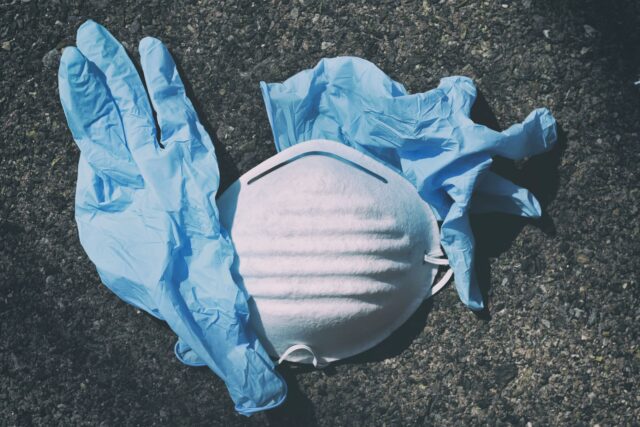By Lee Egerstrom
A research group has pulled together data that show Native American workers and other
minorities are at greater risk of becoming infected by COVID-19 because they hold jobs that require in-person, or face-to-face contact with others.
The Urban Institute, a Washington, D.C.-based think tank, said in a Dec. 1 report that 51 percent of Native and Black workers hold jobs that put them at risk because of personal contact. An even higher percentage, 53 percent, of Hispanic workers hold these jobs.
In contrast, 41 percent of White workers and 42 percent of Asian workers have jobs deemed “essential” or “non-essential” that require in-person contact. That doesn’t allow them to work from home or away from others who may be carriers of the virus.
This most likely isn’t surprising to people from the affected ethnic and racial communities or for health officials and others at the federal, state and local levels who are working to combat the spread of the disease. It should, however, serve as a reminder for people in higher risk occupations to be extremely cautious about how and where they work, and to keep current on developing health and safety information.
The Urban Institute conducts economic and social policy research. It receives funding from government contracts, foundations and private donors and states that its research is to “open minds, shape decisions and offer solutions.”
In this case, the research project is a reminder that people working in face-to-face contact with others need to be especially careful to avoid the contagion. It came just before Minnesota crossed the 4,000 deaths from COVID-19 threshold. Health officials are worried the numbers will continue to rise as many Minnesotans let down their guard for Thanksgiving gatherings, and now head into the Christmas holidays.
Driving these concerns home to Minnesota’s Native population, the Urban Institute also noted that Natives and workers of color are more likely to encounter the virus from other workers because large numbers use public transportation getting to and from work.
What’s more, the researchers stated:
“Black, Native American, and Hispanic/Latinx workers needing to work in person and close to others are less likely to have health insurance coverage than white workers; 16 percent of Black workers and 28 percent of Native American workers and Hispanic/Latinx workers are uninsured, compared with 10 percent of white workers.
“In addition to facing exposure at work, workers working in person can in turn expose their
household or family members to the coronavirus should they contract COVID-19 at or traveling to work.”
Lisa Dubay, a senior fellow at the Institute’s Health Policy Center, and her research colleagues also made a statement that clearly defines a huge proportion of the Native communities in Minnesota.
These workers, they said, “…are most likely to live in multigenerational households that include older adults who may become more severely ill if they contract COVID-19.”
Further, they said, these workers are more likely to have children who require adult supervision and must attend school or a care facility in-person. This, too, increases the possibility of virus transmission.
The Minnesota Department of Health (MDH) has information on its COVID-19 sites that shows how difficult it is to avoid “close contact” when working in-person jobs.
“In general, a close contact means being less than 6 feet from someone for 15 minutes or more throughout a 24-hour period. However, even shorter periods of time or longer distances can result in spread of the virus.
“The longer someone is close to the person who has COVID-19, and the closer they are, the greater the chance the virus can spread.”
This situation isn’t likely to change until COVID-19 has run its course.
The Minnesota Department of Employment and Economic Development (DEED) updated on Dec. 1 a list of the 30 jobs that are currently most available in Minnesota. Leading the pack are registered nurses (RNs), with 3,203 job postings open; certified nursing assistants (CNAs), with 2,387 postings; and first-line supervisors for retail sales workers (2,283 postings).
In all, 24 of the top 30 occupations with job opportunities at this time are in health care, retail and food-related fields. All have complete or partial in-person contact with patients or the general public.
If you are among commuters who work who perform in-person service or care for others, the Minnesota Department of Health (MDH) has information on Close Contacts and Tracing COVID-19 that could help both you and your household members. It is available at https://www.health.state.mn.us/diseases/coronavirus/close.html
Additional MDH updated guidelines for COVID contact quarantines and other precautions can be found at https://www.health.state.mn.us/diseases/coronavirus/close.html
MDH guidelines for long-term essential care providers can be found at
https://www.health.state.mn.us/diseases/coronavirus/hcp/ltccaregiver.html
An executive summary of the Urban Institute report is available at
https://www.urban.org/sites/default/files/2020/12/01/executive_summary_risk_of_exposure_to_covid19.pdf







